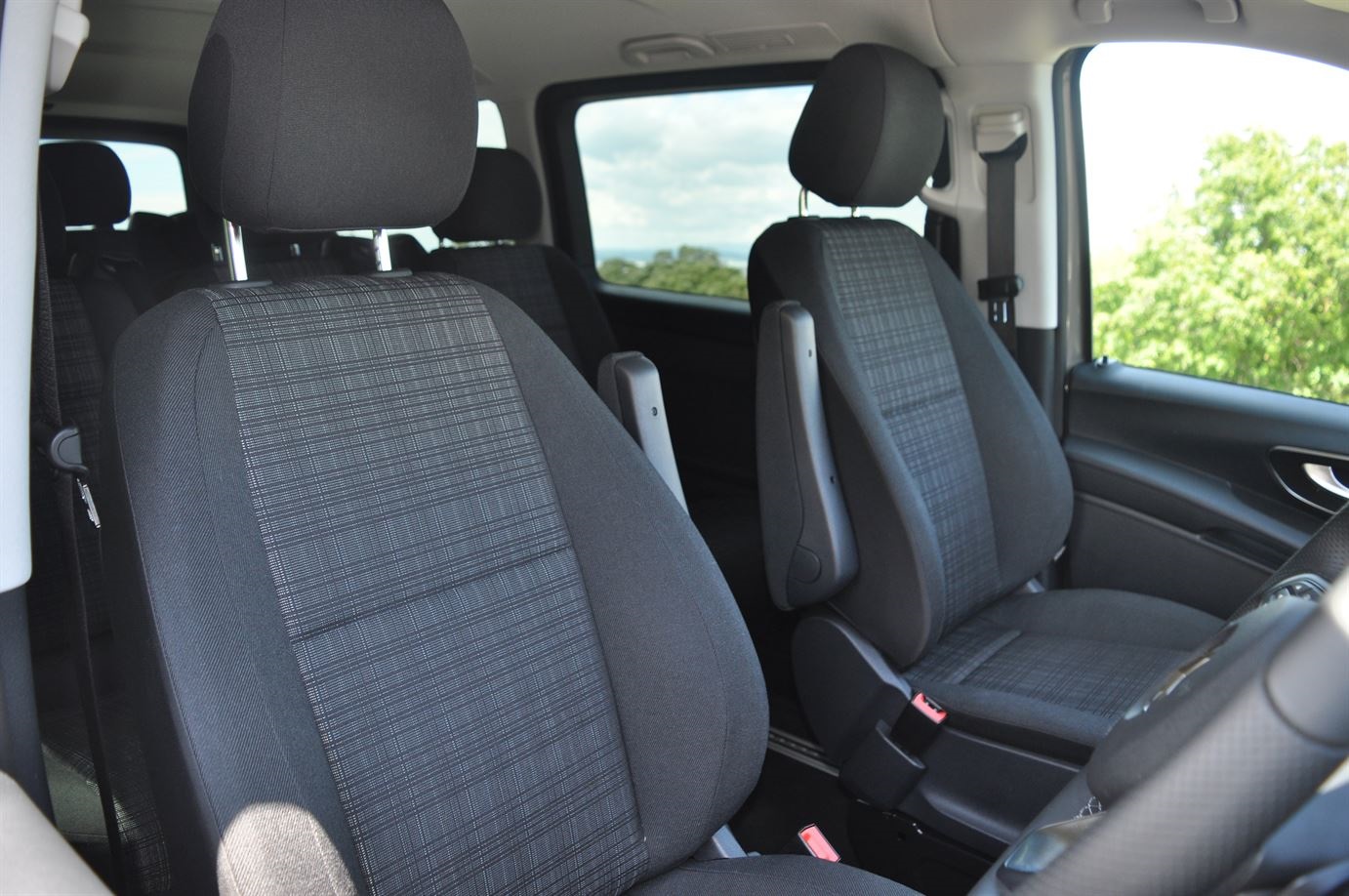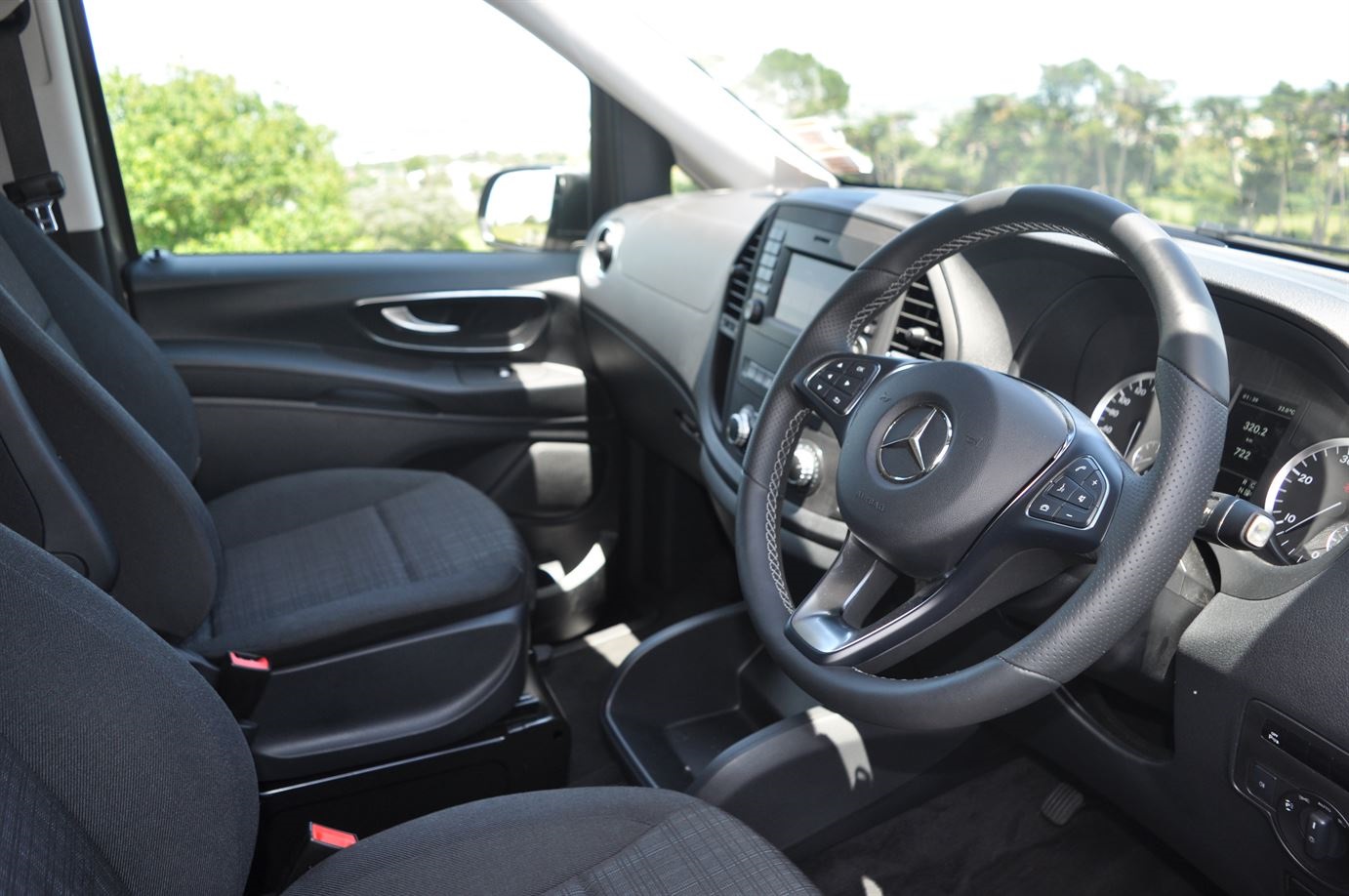Mercedes-Benz Valente 2016 new car review
People movers didn't make it to New Zealand until the nineties, so those with more than three kids had few options.

Years ago, having a large family meant driving a van. Car-based people movers did not make it to New Zealand until the mid-nineties, so those with more than three kids had few options.
They were either stuck with putting them illegally in the boot of a station wagon, or buying from a selection of commercial-based vans with seats fitted to the back. Most had few concessions for safety or comfort.
The arrival of vehicles like the Toyota Previa, Mazda MPV and Chrysler Voyager meant airbags, three-point seatbelts, air-conditioning and refinement could be enjoyed by the extra-fertile.
Van-based people movers remain in the market and have been making a slight resurgence. Luckily this is coming from a new generation of vans, where safety is not forgotten, and the extra space they offer is appreciated.
The Mercedes-Benz Valente is a prime example. Capable of seating up to nine – although our test car was an eight-seat version – it has a safety specification list longer than some passenger cars, drives fairly well, and is comparatively affordable.
Van-based people mover
There is no getting away from the Valente’s commercial roots; in this case, the Vito is the cargo-carrying option. There is also a V-Class version for even more luxury.
Unlike the V-Class, the Valente retains the more basic dash unit of the commercial line, but everything else in the vehicle feels like passenger car quality - interior is fully lined, floors carpeted, and there is plenty of sound deadening.
Seats are fabric in a good-looking crosshatched pattern, while dark plastics and linings add a little class. The seats in the Valente all run on a rail system and can be moved back and forth, or the middle row rotated to face the rear. For this, you need practice and muscle as they are cumbersome and the process a little fiddly. Perhaps ask for a lesson before leaving the dealership.
For parents, you can walk through from the front row to the middle row in the eight-seat version, but not to the third row. There are Isofix points for child seats in four positions.
The driver’s seat is in a position that is upright and comfortable – and for those used to SUVs will feel somewhat familiar. The entertainment system has a 5.8-inch colour screen with steering wheel controls. It works well when you get used to it but feels a little old fashioned compared to some of the touch screen setups out there now, such as in the competing Volkswagen Kombi. Navigation is a $1080 option.
There is a single-zone air-conditioning system, with the ability to force air to the rear through vents above each seat.
Self-parking van
A new addition to the Valente this year is a self-parking system. If you think having such a large vehicle – at well over 5-metres long – would be challenging to park, this should calm your nerves. Parktronic can put the car in both parallel and perpendicular spaces, just control the forward, and reverse motion and the van steers for you.
That is not the only smart technology in the vehicle - there is a ‘Crosswind Assist’ system that will keep it driving in a straight line in strong winds. Attention assist, ABS, electronic stability control and brake assist are part of the standard safety arsenal. Options include a collision prevention system, lane keep assist, blind spot assist and intelligent LED lighting are optional.
The Vito-range is ANCAP five-star safety rated.
Diesel-only for Valente
The only engine choice for the Valente is a four-cylinder 2.2-litre turbodiesel unit that offers 120kW of power and 360Nm of torque, channelled to the rear wheels through a seven-speed automatic transmission.
Mercedes-Benz quotes combined fuel consumption of 6.3L/100km for the Valente, and it will need to be serviced only every 25,000km.
Touring Waiheke Island for a weekend we easily got close to that fuel consumption figure, even with a full load on board. That may come down to the Valente’s relatively relaxed driving style. It is more at home cruising, rather than hurried. Steering is better than some SUVs but still lacks the directness of a car-based setup.
The brakes will haul up its 2210kg weight – plus passengers – but feel a little soft. More than once I felt the need to increase pedal pressure beyond what I would have expected.
Where the Valente has real talent is towing - a 3100kg braked trailer rating putting it in the middle of the ute market for capability.
Affordable Mercedes?
It is hard to believe you can buy a large, modern Mercedes-Benz for $69,700, but that is the case with the Valente. It is hard to argue it is great value for the badge on the nose. If you can survive without that, and don’t need quite as much space you should also consider the Kia Carnival. $49,990 will give you similar features and eight seats.
If you want another European option, the Volkswagen Multivan makes a solid case but starts from a slightly higher price point at $71,490.
Image gallery
Also consider





